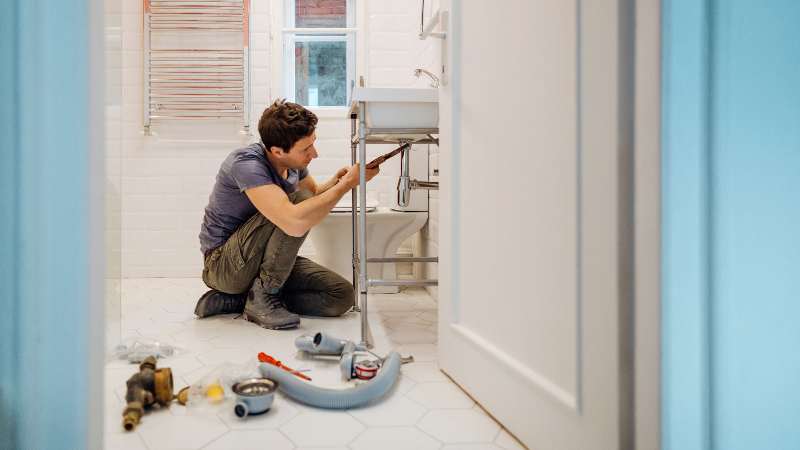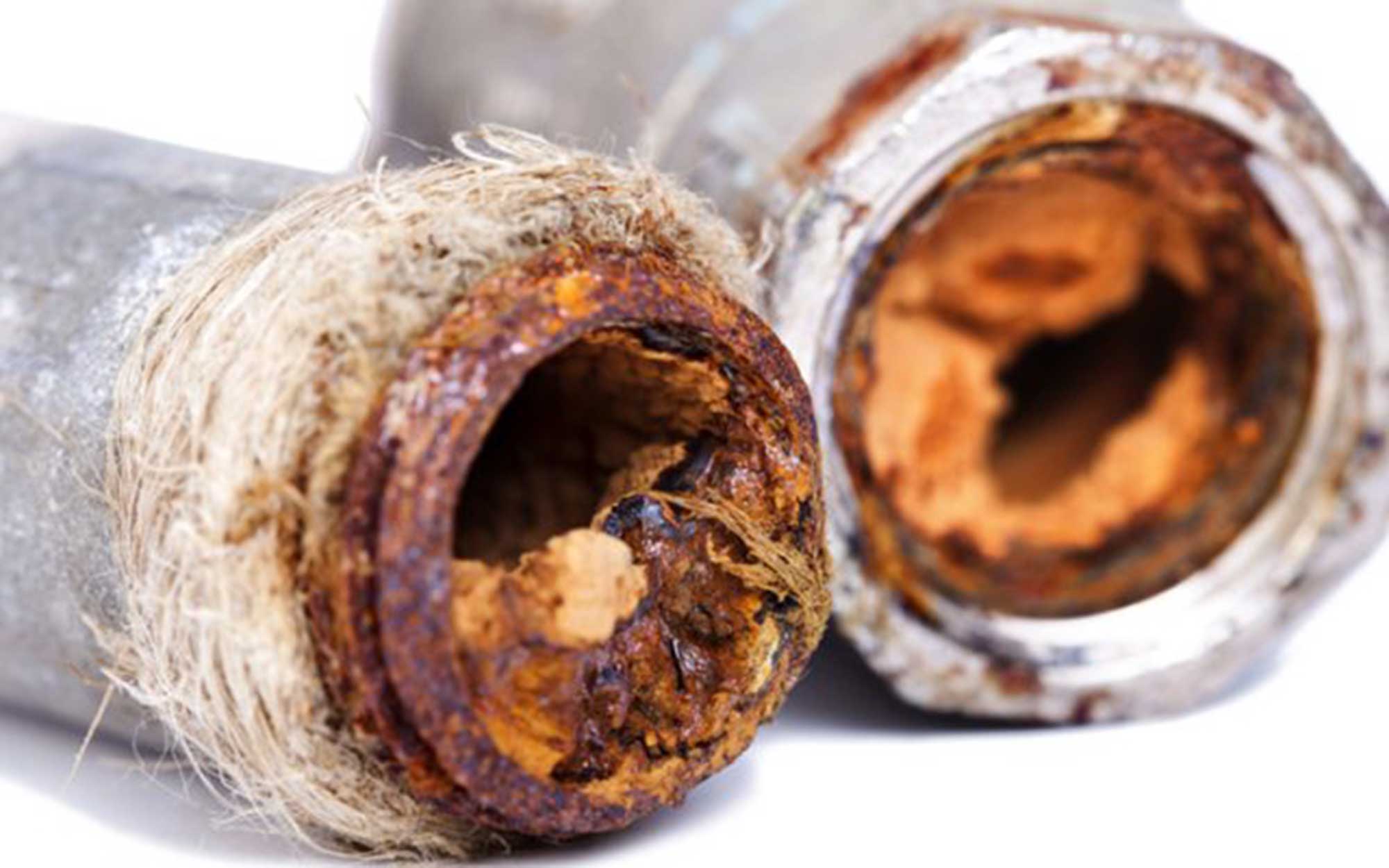Noisy Plumbing Issues SOLVED!
Noisy Plumbing Issues SOLVED!
Blog Article
Listed here below you will discover lots of worthwhile details related to Why Do My Pipes Make Noises.

To identify loud plumbing, it is very important to establish first whether the undesirable noises happen on the system's inlet side-in various other words, when water is turned on-or on the drain side. Sounds on the inlet side have actually varied causes: extreme water stress, used valve as well as tap components, improperly connected pumps or other devices, inaccurately placed pipeline bolts, and also plumbing runs having way too many limited bends or various other constraints. Noises on the drain side typically come from poor location or, as with some inlet side noise, a layout containing tight bends.
Hissing
Hissing sound that takes place when a tap is opened a little usually signals too much water stress. Consult your local water company if you think this issue; it will be able to tell you the water pressure in your area as well as can set up a pressurereducing shutoff on the incoming supply of water pipe if essential.
Thudding
Thudding sound, commonly accompanied by trembling pipes, when a faucet or device shutoff is shut off is a condition called water hammer. The sound as well as vibration are caused by the reverberating wave of stress in the water, which unexpectedly has no place to go. Sometimes opening up a shutoff that discharges water quickly right into a section of piping containing a limitation, elbow, or tee installation can produce the very same condition.
Water hammer can generally be cured by mounting fittings called air chambers or shock absorbers in the plumbing to which the trouble valves or taps are connected. These gadgets permit the shock wave created by the halted circulation of water to dissipate in the air they consist of, which (unlike water) is compressible.
Older plumbing systems may have short upright sections of capped pipe behind walls on faucet competes the very same purpose; these can eventually full of water, minimizing or damaging their effectiveness. The cure is to drain the water supply entirely by turning off the major water system shutoff as well as opening up all taps. Then open up the main supply shutoff and close the taps one by one, starting with the tap nearest the shutoff and finishing with the one farthest away.
Babbling or Screeching
Extreme chattering or shrieking that happens when a shutoff or faucet is switched on, and that typically disappears when the installation is opened totally, signals loosened or malfunctioning interior parts. The option is to change the shutoff or tap with a brand-new one.
Pumps and also appliances such as washing machines and dishwashers can move electric motor sound to pipes if they are incorrectly linked. Connect such products to plumbing with plastic or rubber hoses-never stiff pipe-to isolate them.
Other Inlet Side Noises
Creaking, squeaking, scratching, snapping, and tapping usually are caused by the growth or tightening of pipelines, normally copper ones providing warm water. The audios take place as the pipelines slide against loose bolts or strike neighboring house framing. You can commonly determine the location of the problem if the pipes are subjected; simply adhere to the noise when the pipes are making sounds. Most likely you will uncover a loose pipe wall mount or a location where pipes lie so near floor joists or various other framing items that they clatter against them. Attaching foam pipeline insulation around the pipes at the point of get in touch with should correct the trouble. Make sure bands and wall mounts are safe and secure as well as give ample support. Where feasible, pipeline fasteners must be attached to massive structural components such as foundation walls rather than to mounting; doing so lessens the transmission of vibrations from plumbing to surface areas that can amplify as well as move them. If attaching fasteners to framework is inescapable, wrap pipes with insulation or various other resistant material where they get in touch with bolts, and also sandwich the ends of new bolts in between rubber washing machines when installing them.
Fixing plumbing runs that experience flow-restricting limited or countless bends is a last resort that ought to be embarked on just after consulting an experienced plumbing specialist. However, this scenario is fairly common in older homes that may not have been developed with interior plumbing or that have seen a number of remodels, specifically by amateurs.
Drainpipe Noise
On the drainpipe side of plumbing, the principal goals are to remove surface areas that can be struck by falling or rushing water as well as to shield pipelines to contain inevitable noises.
In brand-new building and construction, bathtubs, shower stalls, toilets, as well as wallmounted sinks as well as containers need to be set on or against resilient underlayments to decrease the transmission of noise via them. Water-saving commodes and also faucets are less noisy than traditional designs; mount them rather than older kinds even if codes in your location still allow making use of older components.
Drainpipes that do not run vertically to the basement or that branch into horizontal pipe runs supported at floor joists or other framing present especially bothersome noise problems. Such pipes are big enough to radiate substantial resonance; they additionally lug substantial quantities of water, that makes the scenario even worse. In brand-new building and construction, specify cast-iron soil pipelines (the huge pipelines that drain pipes commodes) if you can manage them. Their enormity consists of much of the noise made by water passing through them. Also, stay clear of directing drainpipes in walls shared with rooms and also areas where individuals gather. Walls containing drainpipes need to be soundproofed as was defined earlier, using dual panels of sound-insulating fiber board as well as wallboard. Pipes themselves can be wrapped with special fiberglass insulation made for the purpose; such pipelines have a resistant plastic skin (in some cases containing lead). Outcomes are not constantly sufficient.
3 Most Common Reasons for Noisy Water Pipes
Water hammer
When water is running and is then suddenly turned off, the rushing liquid has no place to go and slams against the shut-off valve. The loud, thudding sound that follows is known as a water hammer. Besides being alarming, water hammer can potentially damage joints and connections in the water pipe itself. There are two primary methods of addressing this issue.
Check your air chamber. An air chamber is essentially a vertical pipe located near your faucet, often in the wall cavity that holds the plumbing connected to your sink or tub. The chamber is filled with air that compresses and absorbs the shock of the fast moving water when it suddenly stops. Unfortunately, over time air chambers tend to fill with water and lose their effectiveness. To replenish the air chambers in your house you can do the following. Turn off the water supply to your house at the main supply (or street level). Open your faucets to drain all of the water from your plumbing system. Turn the water back on. The incoming water will flush the air out of the pipes but not out of the vertical air chamber, where the air supply has been restored. Copper pipes
Copper pipes tend to expand as hot water passes through and transfers some of its heat to them. (Copper is both malleable and ductile.) In tight quarters, copper hot-water lines can expand and then noisily rub against your home's hidden structural features — studs, joists, support brackets, etc. — as it contracts.
One possible solution to this problem is to slightly lower the temperature setting on your hot water heater. In all but the most extreme cases, expanding and contracting copper pipes will not spring a leak. Unless you’re remodeling, there's no reason to remove sheetrock and insert foam padding around your copper pipes.
Water pressure that’s too high
If your water pressure is too high, it can also cause noisy water pipes. Worse, high water pressure can damage water-supplied appliances, such as your washing machine and dishwasher.
Most modern homes are equipped with a pressure regulator that's mounted where the water supply enters the house. If your home lacks a regulator, consider having one professionally installed. Finally, remember that most plumbers recommend that water is delivered throughout your home at no lower than 40 and no greater than 80 psi (pounds per square inch).
Whatever the state of your plumbing, one thing is certain — you’re eventually going to encounter repair and replacement issues around your home that require professional help. That’s where American Home Shield can come to your aid.
https://www.ahs.com/home-matters/repair-maintenance/causes-of-noisy-water-pipes/

I stumbled upon that entry about Why Do My Plumbing Pipes Make A Knocking Noise when scouting around the search engines. I beg you take a moment to promote this post if you enjoyed it. I am grateful for your time. Visit us again soon.
Book Your Installation Report this page